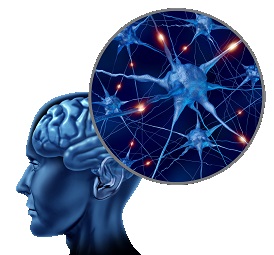10 Jul Mainspring of Language Learning
The brain wants something to happen so it can learn. Almost anything that is not nothing will stimulate neuron growth. There’s a good Radio Lab show that explores research on this topic at “How Does Your Brain Grow.” The program includes reference to “studies in which thinking alone—brain puzzles and learning new languages—can actually stave off the onset of Alzheimer’s and other degenerative diseases of the brain. Thinking, it turns out, can’t hurt.”

Can we assume, then, that any linguistic activity in the brain will spur language learning? Many behaviorists suggest that language learning is entirely a product of experience, bolstering the connection between activity and language learning. Innatists, on the other hand, focus on the machinery with which we are born. One such scientist, Noam Chomsky, said: “We are designed to walk… That we are taught to walk is impossible. And pretty much the same is true of language. Nobody is taught language. In fact you can’t prevent the child from learning it” (from The Human Language Series – 1994). The machinery is a necessary component of the learning process, but I find Chomsky’s statements extreme. Is the machinery of the human brain sufficient, as the innatists suggest, without external input of patterns, examples and training? We have strong evidence to the contrary in the cases of children raised for years cruelly in isolation who never heard human speech and never developed the ability to communicate verbally. To me this shows two things:
- To learn language, a person needs the patterns and to exercise the machinery according to the pattern
- To learn to communicate with language, a person needs social interaction
If these ideas are both correct (I can’t prove either), then not only is innatism flawed, but the ideal of language learning may be dependent on the amount and quality of experiences to which a person is exposed.
| Understanding Context Cross-Reference |
|---|
| Click on these Links to other posts and glossary/bibliography references |
|
|
|
| Prior Post | Next Post |
| Digital Presence and Immortality | Context of Knowing Thinking & Belief |
| Definitions | References |
| learn patterns | The Human Language Series |
| language behaviorism | BF Skinner |
| experience | Piaget Hawkins 2004 |
| stimuli responses | Deck on Learning Theories |
Back to the Behaviorists for a second. BF Skinner is reputed to have said “Give me a child, and I’ll shape him into anything.” This is a bold assertion, and implies that if Mr. Skinner applied a specific regimen of stimuli, he could elicit a predictable set of responses that, over time, would shape the person. I agree that people often respond to stimuli in predictable ways, but I don’t think people, even very young people, are as susceptible to manipulation as Skinner suggests.
How Stimulating
Stimuli and responses, some reflexive, follow the universal law of action and reaction. with the added twists of human unpredictability based on:
 memory of past actions (stimuli) and reactions
memory of past actions (stimuli) and reactions- ability to place an action in context
- ability to discern nuances in the action
- ability to choose to react in a different way (oppose a reflex)
The action of these twists in the mind, as they respond to linguistic input, as well as non-linguistic input assigned symbolic language representations, provides fertile ground for neuron growth and learning. People can be more active in listening or perception or more passive. In my observation, the more actively we engage our brains in responding to linguistic and non-linguistic stimuli, the more likely we are to learn. I have no proof, but I have heard evidence from multiple sources to corroborate this idea. Also, the benefits of imitation, repetition, memorization and drilling are well-understood and incorporated into learning environments with positive outcomes for learners.
Cognitivists like Piaget suggest that it is necessary to look at language learning in the context of a person’s intellectual development. Some even go further to add physical development in the equation, supporting some of the more surprising findings described in the Radio Lab show. Cognitivists also hasten to point out that language development is largely a matter of applying symbolic representations (words and sounds) to observed physical phenomena, thus it is difficult to divorce the symbolic learning from the rest of the life-long learning process.
If we think of the brain as an impenetrable black box, why not treat the thinker’s environment as “inputs” and treat behaviors as “outputs” and build systems that mimic the behaviors (see Hawkins 2004 pp. 15-16)? In upcoming posts, I will attempt to show how exposing a system to a broad range of correct patterns can help it learn language, and hopefully, simulate coherent communication behavior.
See also this Deck on Learning Theories
| Click below to look in each Understanding Context section |
|---|








